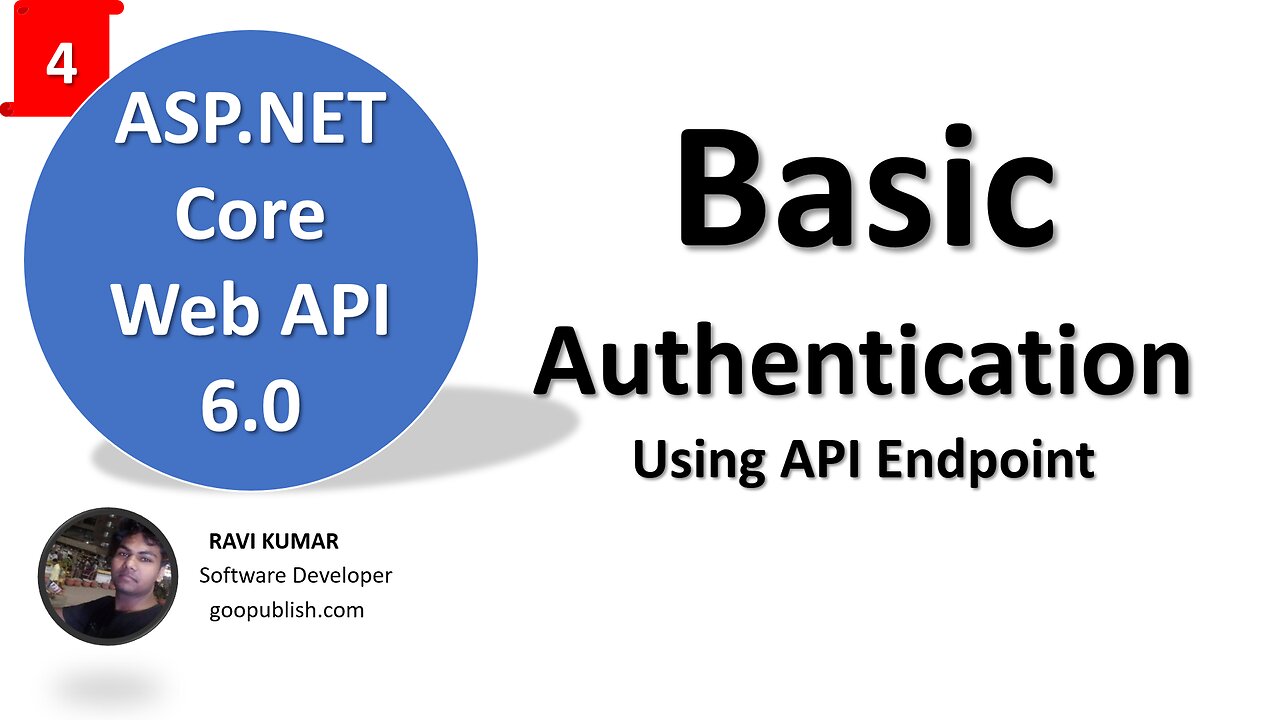Premium Only Content

Part-4 | How to Implement Basic Authentication || Asp.Net Core Web API 6.0
Basic Authentication is a simple authentication mechanism used to secure web APIs and other online services. It involves sending a username and password in the HTTP request headers, which are base64-encoded. While it's straightforward to implement, it's not the most secure method and is typically used in combination with HTTPS to ensure the security of the transmitted credentials.
Here's how Basic Authentication works in theory using a web API:
1. **Client Request**: The client (e.g., a mobile app or a web application) makes an HTTP request to a protected resource on the web API server. The client includes an "Authorization" header in the request.
2. **Header Creation**: To create the "Authorization" header, the client combines the username and password into a single string, separated by a colon (e.g., "username:password"). This string is then base64-encoded.
3. **HTTP Request with Authorization Header**: The client includes the base64-encoded string in the "Authorization" header of the HTTP request.
4. **Server Authentication**: The server receives the HTTP request and extracts the "Authorization" header.
5. **Decoding the Credentials**: The server decodes the base64-encoded string from the "Authorization" header to obtain the username and password.
6. **Authentication**: The server compares the provided credentials with its stored user credentials (e.g., in a database). If they match, the server grants access to the protected resource. Otherwise, it returns an authentication error (e.g., HTTP 401 Unauthorized).
7. **Access Granted**: If the credentials are valid, the server allows the client to access the protected resource, and it returns the requested data or performs the requested action.
In this example, "dXNlcm5hbWU6cGFzc3dvcmQ=" is the base64-encoded string for "username:password."
Important considerations:
1. **Security**: Basic Authentication should always be used with HTTPS to encrypt the credentials during transmission. Without HTTPS, the credentials can be easily intercepted.
2. **Credential Storage**: Server-side, it's essential to securely store user credentials (usually hashed and salted) to protect them from data breaches.
3. **Token-Based Authentication**: While Basic Authentication is simple, token-based authentication methods like OAuth2 or JSON Web Tokens (JWT) are more secure and often preferred for modern web APIs.
4. **Rate Limiting**: To prevent abuse, it's a good practice to implement rate limiting and other security measures when using Basic Authentication.
5. **User Experience**: Consider user experience when using Basic Authentication, as it may require users to enter their credentials frequently, unlike token-based methods that offer more persistent sessions.
-
 2:00:05
2:00:05
Nick Freitas
14 hours agoIs Conservatism Dead?
6649 -
 22:07
22:07
Jasmin Laine
15 hours ago'You Think This Is NORMAL?!'—U.S. Official STUNS CTV With BRUTAL Mic Drop
66226 -
 LIVE
LIVE
BEK TV
22 hours agoTrent Loos in the Morning - 7/31/2025
355 watching -
 LIVE
LIVE
The Bubba Army
20 hours agoShannon Sharpe FIRED after Sex Lawsuit - Bubba the Love Sponge® Show | 7/31/25
3,833 watching -
 21:23
21:23
DeVory Darkins
1 day ago $6.63 earnedTrump makes STUNNING Admission regarding Epstein and WSJ settlement
14.6K95 -
 8:14
8:14
MattMorseTV
15 hours ago $4.84 earnedTrump just DROPPED the HAMMER.
23.2K34 -
 2:47:03
2:47:03
Patriot Underground
18 hours agoTruthStream RT w/ Joe & Scott (7.30.25 @ 5PM EST)
35.8K24 -
 42:04
42:04
World2Briggs
15 hours ago $0.83 earnedRanking All 50 States By Natural Beauty Will Shock You!
3.43K1 -
 42:46
42:46
The Kevin Trudeau Show Limitless
21 hours agoManifest Anything: The Secret Teachings of Kevin Trudeau
1.7K3 -
 LIVE
LIVE
Culture Crack
1 hour ago🔴 FINISHING Games | Metal Gear Rising, Prototype 2, Callisto Protocol + Online Safety Act Discussion
43 watching